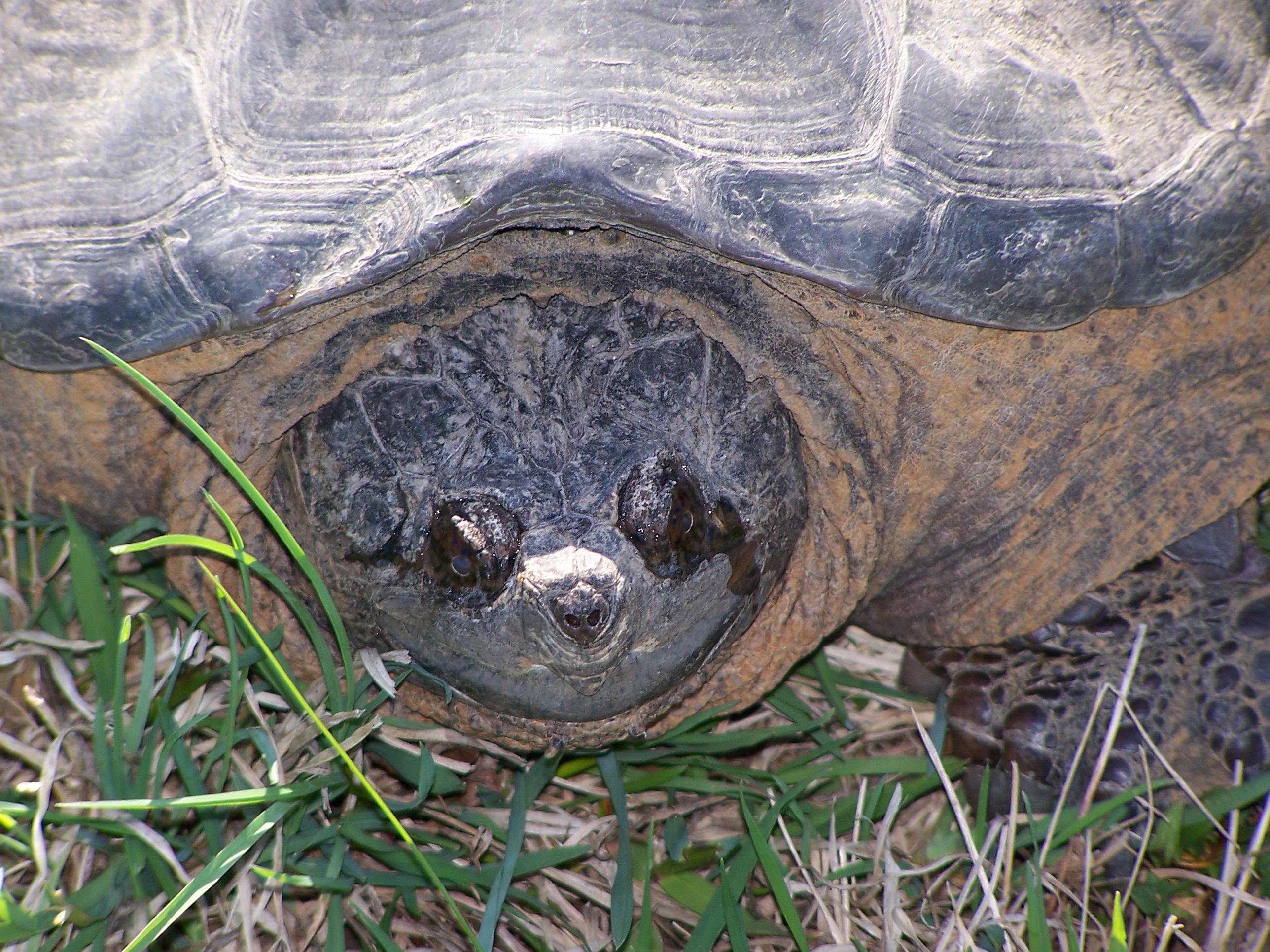Pike County Federation of Sportsmen's Clubs
Common Snapping Turtle

With a shell length that can exceed 20 inches, the Common Snapping Turtle (Chelydra sepentina) is by far the largest turtle in Pike County and second nationally only to its deep South cousin, the Alligator Snapping Turtle. Loving shallow lakes and ponds, the snapper can be found throughout the County and is especially prevalent in summer camp and residential community waters where it poses a threat to fingers and toes.
The snapping turtle is omnivorous readily consuming fish, snakes, smaller turtles, and birds. It will readily scavenge carrion if found in or near the water. It may lie in wait partially buried in muck or weeds. When its prey swims close, the turtle's head will lunge out at lightening speed and snatch its meal. A snapper will also swim under water and pluck its food off the surface making the it a major predator of ducklings.
In Pike County, snappers are most often seen in the late Spring when they leave the water to lay their eggs. The female snapper will often travel long distances to find a suitable site. Finding sandy soil, she will dig a hole and lay up to 80 eggs. After burying the eggs, she then returns to the pond. Many turtles are killed while crossing roads during these treks.
In their nests, the eggs incubate in the warming soil. Though buried, predators often find the nests and consume the leathery eggs. Hatchlings, no larger than a quarter in size, must work their way to a body of water. During the arduous journey, they too are subject to predation. Luckily for the snapper babies, nature has provided them with a unique form of camouflage. As they hatch, sticky juices coat their shell. Then as they dig their way out of the nest, soil particles stick to the shell. This permits them to blend in with the ground surface no matter what color the soil may be. If the turtle survives its trip to the pond, it may live to 30 years.
The Common Snapping Turtle makes a tasty meal. It is commonly harvested to make Snapper Soup which is often served in the finest restaurants. Snappers are also caught and removed to make ponds safer for swimmers and for waterfowl propagation. It is important to remember that Snapping Turtles are protected by law. People wishing to harvest snappers must have a valid Pennsylvania Fishing license and obey the State's harvest laws.
Snapping Turtles do not make good pets. Besides their nasty disposition, their frequent defecation produces a very obnoxious odor and quickly fouls terrarium water.
Warning !!! Snapping Turtles may be extremely dangerous! Mature snappers can easily snap off fingers and toes. Turtles clamping down on legs or arms may not let go and may require surgical removal.
There is no safe place to hold a snapping turtle. Their extremely long neck can reach any part of the turtle's body. Holding a snapping turtle by its tail is not advisable. First, it can produce damage to the turtle's muscles and spine. Second, the holder often forgets to hold the turtle far enough away from his body resulting in the turtle biting the holder's stomach, thigh, or other sensitive places. If you must remove a snapping turtle, direct it into an appropriately sized bucket or box before removal.
Care must also be taken around "dead" snapping turtles. They have a primitive nervous system making them very hard to kill. The snapping turtle has a ganglia that can allow its body to react over 24 hours after is head has been removed. Many people have been bitten by supposedly dead turtles.

Female with mouth open Turned belly-up (head is to the right)
Return to Home Page Return to Observing Nature Page